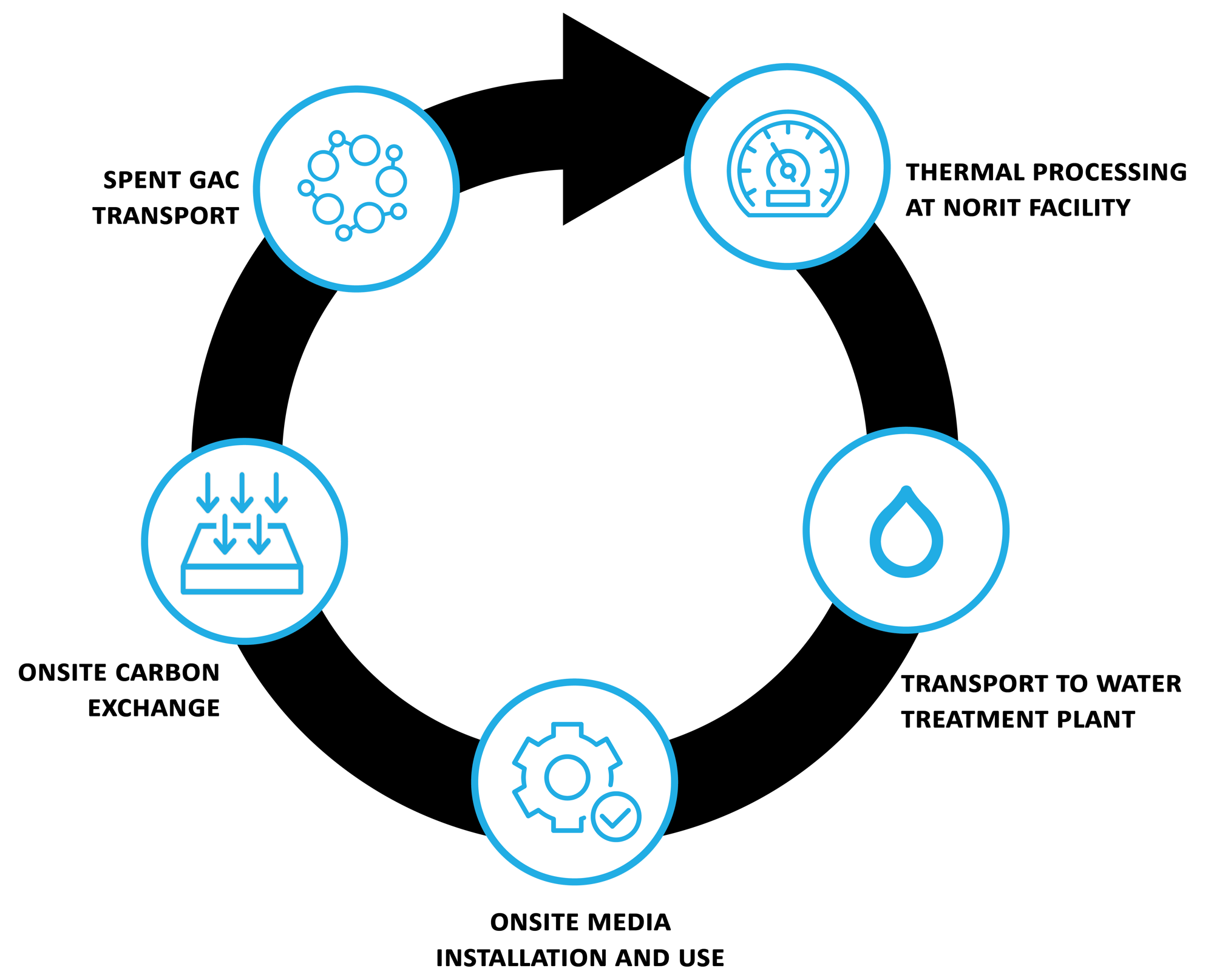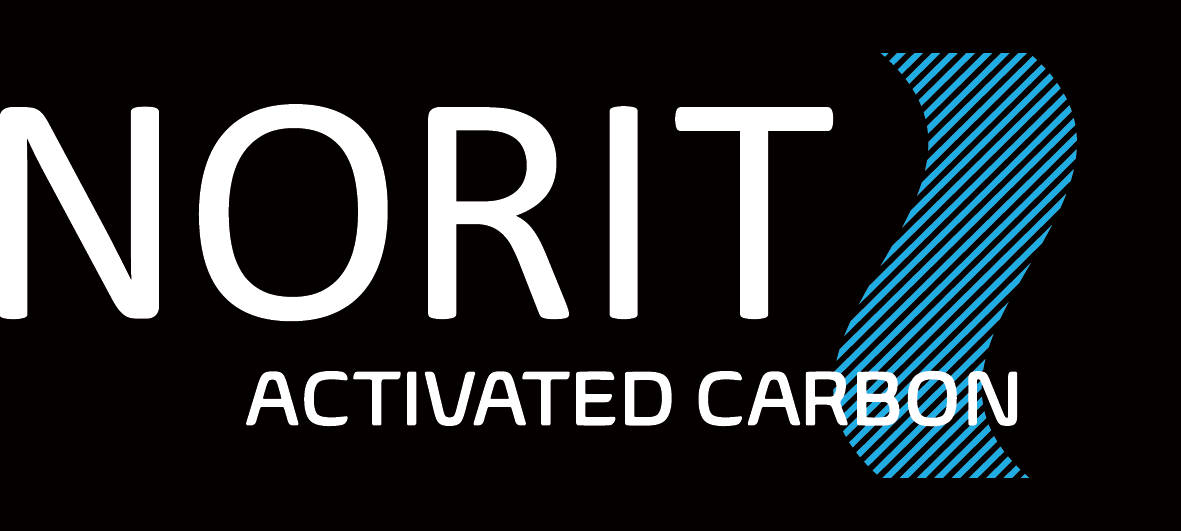Reactivation
Reactivation – the basics
Reactivation is a way to regenerate spent granular or pelletized activated carbons, making them ready for another reuse cycle. At the heart is a thermal process in which the contaminants are removed from the used activated carbon. These contaminants are subsequently made harmless by conversion (e.g., hydrocarbons to H2O and CO2) in an environmentally sound and compliant way. Regeneration and recycling yield a much lower GHG footprint (typically around 80% lower) than using virgin carbon on a disposable basis, and is more economical.
NORIT® offers reactivation services from its network of 6 reactivation plants and JVs on three continents.
Reactivation is distinguished by business type into:
- Custom or toll reactivation – the customer receives back his own product after regeneration.
- Pool or non-toll reactivation – spent carbons from various sources are obtained by NORIT, and reactivated together. The customer is supplied with either the regenerated activated carbon or with fresh carbon, as desired
Reactivation is separated by application type into:
- ‘Green’ – the spent carbon originates from a potable water or food application. In the US, this is normally referred to as Water Grade or Food Grade.
- ‘Amber’ – the saturated activated carbon has been used in a chemical, wastewater, or gas purification.
These flows are kept strictly separate to prevent contamination of green product flows with amber carbons. Our offering (‘amber’ and/or ‘green’ reactivation) differs per region.
Reactivation – in practice
The reactivation cycle can be described as follows:
- Spent granular or pelletized active carbon is taken to a NORIT reactivation facility: in bulk tank cars or containers, inside rental filters, or packed in FIBCs
- Saturated activated carbon from liquid phase applications is transported in (water) wet form
- At our plant, the exhausted activated carbon is heated to approximately 900°C, in the presence of steam in a non-oxidizing atmosphere
- Impurities are released by the carbon surface, and enter the gas phase
- Large impurities (humic acids, dark color bodies, proteins etc.) are cracked into small molecules going to gas phase and some carbon residue in the activated carbon pores. This carbon residue is removed by gasification with steam to clean the surface
- Once in the gas phase, the impurities are rendered harmless by the reducing atmosphere in the reactivation kiln, after-burning with air, scrubbing, and/or dust-removal
- To ensure we can deal with the impurities in an environmentally sound way, certain acceptance criteria apply to the spent carbon
- During the process there are always minor losses due to mechanical attrition and in cases also gasification of the activated carbon. These losses are compensated by adding fresh makeup carbon from our wide portfolio of virgin granular activated carbon grades
- The reactivated carbon can be shipped to our customers in bulk tank cars, packed in FIBCs, or inside rental filters
- The recycled activated carbon shows a performance very close to that of virgin active carbon
Reactivation in Europe, Middle East, Africa
Reactivation in the Americas
Reactivation in Asia / Pacific
Sustainable Activated Carbon Reactivation
Reactivation is a proven method of sustainable carbon management. By restoring spent activated carbon to near-virgin quality, the process extends media life, reduces disposal volumes, and lowers overall treatment costs.
Process overview:
-
Spent activated carbon undergoes controlled thermal treatment to remove adsorbed organics and PFAS.
-
The reactivated material provides adsorption capacity comparable to new activated carbon.
Key benefits:
-
Reduces need for landfill disposal.
-
Cuts lifecycle costs by 50–70% compared to new activated carbon.
-
Supports circular, environmentally responsible treatment approach.


